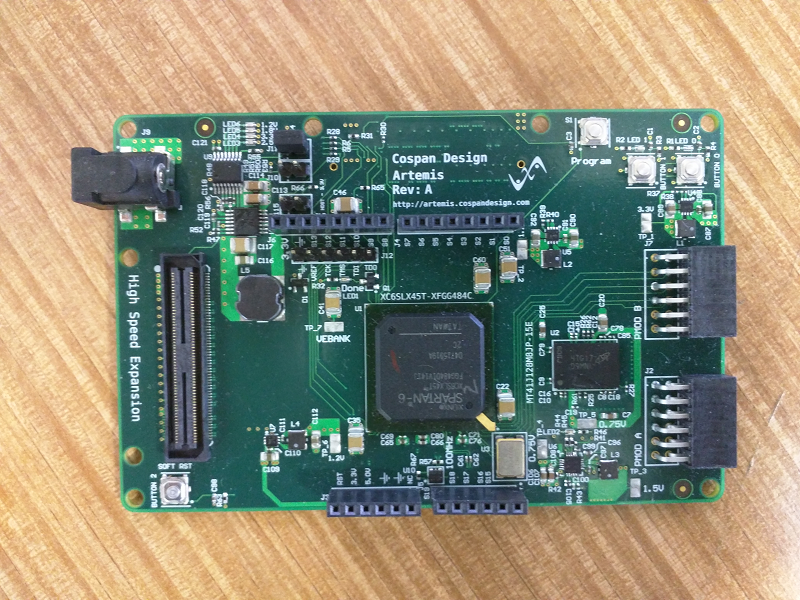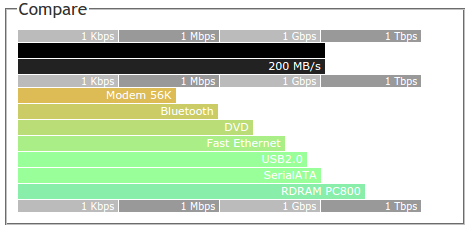Artemis!
 Artemis attached to the USB 2.0 and PCI Express Board
Artemis attached to the USB 2.0 and PCI Express Board

FAB to Assembly
Artemis came from fab about two months ago. I had hoped I could assemble the entire board myself in order to save some money. The FPGA and DDR3 came pre-balled with ROHS (lead free) solder so I didn't need to put down any solder paste. So I put the FPGA and memory chip on the board and ran it through the reflow oven. It looked like it worked until I bumped the board and both chips fell off.
After a couple more attempts I asked my friend at MIT Media Lab to let me use the BGA rework station. We spent half a day there putting on FPGAs and memory chip. It looked like it worked so I went to ahead assembling the rest of the board. It was about 1 AM and I was nearly finished when I looked down at the board and noticed the DDR3 had slid sideways... the DDR3 didn't stick then either. I tentatively tested the FPGA and it was only attached by a couple of balls... GRRR!
I decided to bite the bullet and spend about $1,000 to get the boards assembled.
Smoke to Nysa
Finally it was time for the smoke test. Success! Artemis held onto it's smoke. All regulators were outputting the correct voltages. I moved on to testing the FPGA. I created a simple LED blink app to test out the FPGA, LEDs, buttons and 100MHz oscillator. Success! I attached the new host interface board and after about a week of modifying a controller I used to interface with Dionysus I was able to download my first Nysa image. It was about that time I realized that I made a mistake in the design of Artemis... NO RESET BUTTON! ARGGH! I had to add an external wire but the correct solution is to add a open drain reset signal will pull the pre-existing reset pin on the Artemis base low from the host computer. This is useful so that I don't have to physically reset the board all the time.
DDR3
Dionysus, the small board I used to test out Nysa, had a 16-bit 100MHz SDRAM chip as the memory source. To get an idea of what is possible with SDRAM I generated the following comparison charge using this great website: Forret Tools

The DDR3 is obviously faster, it has an 8-bit interface at a double data rate running at 300MHz, so it equates to 1 byte @ 600MHz or this new comparison:

I used the built in DDR3 memory core generator from Xilinx Coregen to create and interface with the memory, then wrote a wishbone wrapper around it and after about a week I verified that I could write to all 128MB and read it back correctly!
I did run into an issue that I wanted to mention. Xilnx Coregen generates Verilog source code that I am not legally allowed to distribute so I figured out a way to generate a NGC file that users can instantiate. Its the equivalent of distributing a binary version of a library.
What next
I realized that in order to take advantage of the DDR3 I needed to design a DMA controller that could pull data from something like a camera put it into DDR3 memory temporarily and then store it into the SATA hard drives or output it to HDMI. It has turned out to be a complicated core. Once this is finished I am planning to design a stereo CSI camera board to test it out.
 Dave
Dave
Discussions
Become a Hackaday.io Member
Create an account to leave a comment. Already have an account? Log In.